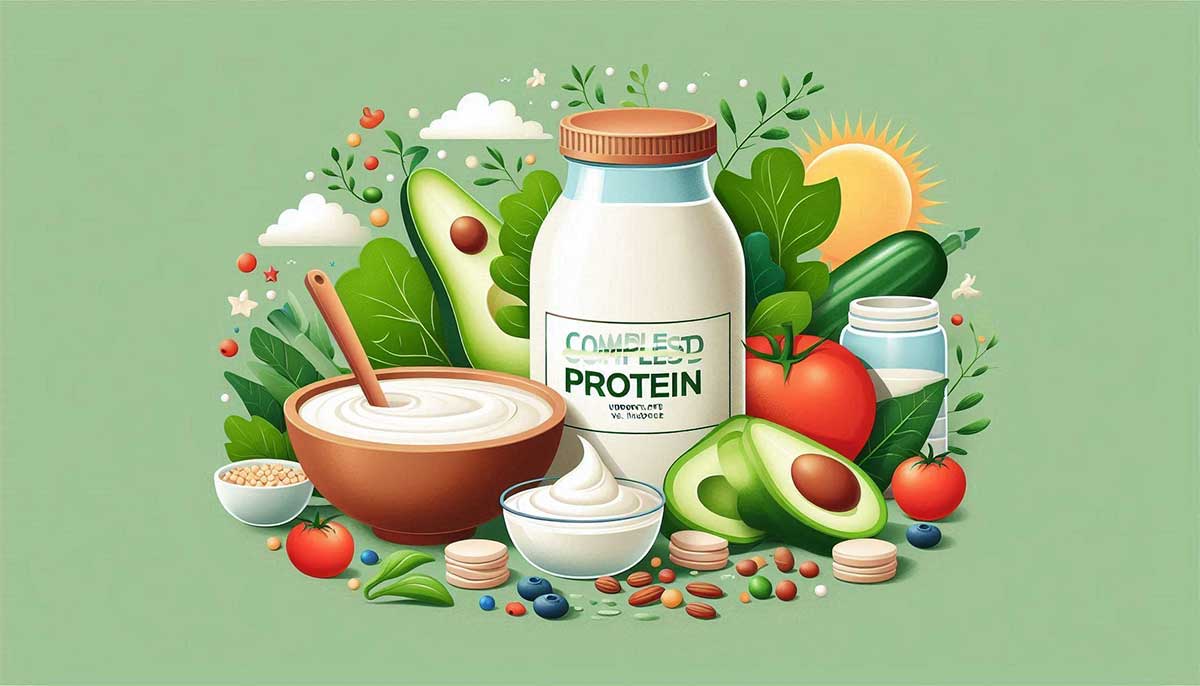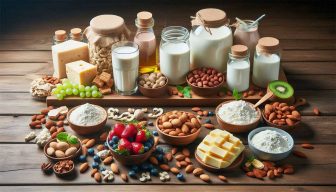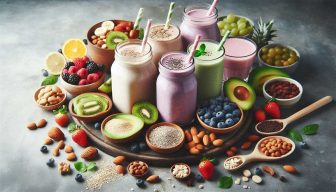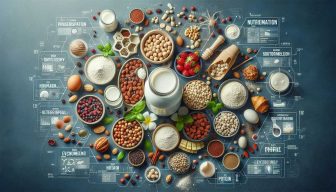Plant-based diets can be nutrient-rich and full of delicious options, but understanding the difference between complete and incomplete proteins is crucial for maintaining a healthy lifestyle. As you explore various plant-based protein sources, you may wonder how to ensure you are getting all the crucial amino acids your body needs. In this blog post, we’ll guide you through the distinctions between these two types of proteins, provide examples, and highlight the importance of including both in your diet.
What Are Proteins?
The term “proteins” refers to large, complex molecules that play critical roles in the body. They are composed of building blocks known as amino acids, which are vital for the growth, repair, and overall maintenance of your body’s tissues. Proteins are not just found in animal products; they are also abundant in many plant-based sources. This is an important consideration for those following a plant-based diet, as understanding the types of proteins you consume can optimize your nutritional intake.
The Role of Proteins in the Body
Proteins serve numerous functions in the body, including the building and repairing of tissues, facilitating biochemical reactions as enzymes, and regulating various physiological processes. Furthermore, they aid in the production of hormones and are integral components of your immune system. By including sufficient protein in your diet, you ensure proper functioning and support your overall health.
Types of Amino Acids
There are 20 different amino acids that make up proteins, categorized into two main types: vital and non-vital amino acids. Essential amino acids cannot be produced by your body and must be obtained from your diet, while non-vital amino acids can be synthesized by your body. Knowing which foods are high in these vital amino acids can greatly enhance your vegan protein sources and contribute to a balanced plant-based diet.
| Amino Acid Type | Description |
|---|---|
| Essential | Must be consumed through food as the body cannot manufacture them. |
| Non-Essential | Can be produced by the body even if not obtained from food. |
| Conditionally Essential | Become vital under certain circumstances like illness or stress. |
| Amino Acid Chains | Are formed when amino acids link together to make proteins. |
| Branched-Chain Amino Acids | Play a crucial role in muscle metabolism and recovery. |
For those who wish to maximize their protein intake responsibly, it’s fundamental to consume a varied diet that includes both complete and incomplete protein sources. Complete proteins provide all nine vital amino acids your body needs, while incomplete proteins may be lacking in one or more of these amino acids. Examples of complete protein sources include quinoa and soy products, while legumes and grains are considered incomplete on their own. Understanding the synergy between these different protein sources helps ensure optimum health. Keep in mind, that you can achieve a balanced and nutritious plant-based diet by strategically combining these protein sources.
- Plant-based proteins can be both complete and incomplete.
- Complete protein sources offer all vital amino acids.
- Incomplete protein sources may require combination with other foods.
- Your protein intake is vital for growth and healing.
- Incorporating various sources enhances your nutrient profile.
What you should know is that a complete protein contains all nine vital amino acids, which makes it crucial for your body’s growth, repair, and maintenance processes. In contrast, incomplete proteins, while still beneficial, must be paired with other protein sources to deliver a full range of amino acids. For example, legumes combined with grains create a complete protein profile. Understanding and utilizing this knowledge effectively in your plant-based diet helps in achieving your nutritional goals. You can maximize your health and well-being by ensuring that you consume a balanced array of protein sources.
Complete Proteins Defined
Some dietary sources of protein are classified as complete proteins, meaning they contain all nine imperative amino acids that your body cannot produce on its own. These amino acids are crucial for various bodily functions, including muscle repair, immune function, and hormone production. In a plant-based diet, finding complete proteins can be particularly vital since many plant foods tend to be lower in one or more of these imperative amino acids, which is why understanding the difference between complete and incomplete proteins is key to your nutritional success.
Characteristics of Complete Proteins
Characteristics of complete proteins include their ability to provide a well-rounded amino acid profile, which supports your body’s needs for growth and maintenance. In contrast to incomplete proteins, which lack one or more imperative amino acids, complete proteins can help ensure that you meet your daily protein requirements without the need to combine various food sources. For anyone following a plant-based or vegan protein plan, understanding which foods are complete proteins can make meal planning easier and more efficient.
Examples of Plant-Based Complete Proteins
Proteins that are classified as complete in the plant world include quinoa, soy products like tofu and tempeh, and certain seeds such as hemp and chia. These plant-based protein sources not only offer an optimal amino acid profile but are also rich in other nutrients, contributing to a well-rounded diet. Including these foods can significantly enhance your nutrient intake while ensuring you receive the necessary proteins for muscle synthesis and overall health.
Proteins derived from quinoa and soy are considered some of the best sources that your plant-based diet can provide. By incorporating tofu or tempeh into your meals, you not only enjoy a versatile ingredient for various dishes but also boost your intake of imperative amino acids. Adding hemp seeds or chia seeds to smoothies or salads can further help achieve balance in your protein sources, making it easier to maintain a nutritionally adequate and diverse diet. You’ll find that these complete proteins support your physical health while allowing for culinary creativity and enjoyment in your vegan cooking endeavours.
Incomplete Proteins Defined
Even within a plant-based diet, not all protein sources are created equal. Incomplete proteins are those that do not contain all nine vital amino acids that your body needs to function optimally. These vital amino acids are vital for various bodily functions, including growth, repair, and the production of enzymes and hormones. While your body can produce some amino acids, it cannot synthesize the nine vital ones, making it crucial to include a variety of protein sources in your diet.
Characteristics of Incomplete Proteins
Incomplete proteins typically come from plant sources, and they often lack one or more of the vital amino acids. This means that, while they can contribute to your overall protein intake, they may not provide your body with the complete range of nutrients it needs. Common characteristics of incomplete proteins are that they are often lower in certain amino acids, which can result in a less balanced nutritional profile if relied upon exclusively. However, by understanding their composition, you can strategically combine different protein sources to ensure you receive all the necessary amino acids.
Examples of Plant-Based Incomplete Proteins
Proteins such as legumes, grains, nuts, and seeds are generally considered incomplete proteins. For instance, beans are rich in lysine but low in methionine, while grains like rice and wheat are high in methionine but low in lysine. This means that a diet consisting solely of one type of incomplete protein can lead to deficiencies in vital amino acids.
With a diverse plant-based diet, you can easily structure your meals to include both incomplete and complete proteins. By combining foods like rice and beans or peanut butter on whole-grain bread, you can enjoy the benefits of a well-rounded protein profile. This strategic pairing not only enhances your protein intake but also improves your overall dietary balance, ensuring you meet your nutritional needs. Do not forget, that incorporating a variety of plant-based foods will help you enjoy the myriad of health benefits that come with a balanced diet while also providing you the vital amino acids your body craves.
Combining Incomplete Proteins
Importance of Complementing Proteins
With a plant-based diet, you may encounter the concept of incomplete proteins, which refer to food sources that lack one or more important amino acids. Essential amino acids are the building blocks of proteins that your body cannot produce on its own, meaning you must obtain them through your diet. To ensure that you receive all the important amino acids necessary for optimal health, it is crucial to complement or combine these incomplete proteins. By doing so, you create a more balanced and nutrient-rich intake, maximizing the benefits of your plant-based protein sources.
Popular Protein Pairings
Incomplete protein sources can work together beautifully when combined to form a complete protein. For example, grains such as rice or quinoa can be paired with legumes like beans or lentils to ensure that all important amino acids are present. This complementary approach allows you to enjoy diverse flavours and textures while ensuring that your body receives the complete spectrum of amino acids it needs. Other popular pairings include peanut butter on whole-grain bread or corn with beans, both offering a solid foundation of vegan protein.
For instance, you might consider creating a delicious lentil and rice dish or a hearty quinoa salad featuring mixed beans and vegetables. These meals not only taste great but also provide a robust protein profile. Additionally, by deliberately combining different *incomplete proteins*, you can further diversify your nutrient intake, ensuring that you obtain various vitamins and minerals that accompany these foods. By exploring and experimenting with different *plant-based protein* combinations, you can create satisfying and nutritious meals that fuel your body effectively.
Health Benefits of Plant-Based Proteins

To fully appreciate the health benefits of plant-based proteins, it’s crucial to recognize the unique contributions of both complete and incomplete proteins in your diet. Complete proteins, which contain all nine crucial amino acids, can be found in certain plant sources such as quinoa, soy, and chia seeds. In contrast, incomplete proteins, commonly found in legumes, nuts, and grains, lack one or more of these crucial amino acids. Understanding the difference between these protein types will not only help you maintain a balanced diet but also ensure you are meeting your nutritional needs. For a deeper exploration of this subject, check out this resource on Complete vs. Incomplete Protein: Definition, Examples.
Incorporating both complete and incomplete proteins into your meals can lead to several nutritional advantages. Nutritional experts agree that a varied plant-based diet rich in diverse protein sources helps improve muscle mass and overall health. Additionally, plant-based proteins often come packed with other crucial nutrients, such as fibre, vitamins, and antioxidants, that your body needs. This is particularly beneficial for those on a vegan diet, as these nutrient-dense foods can fill nutritional gaps and enhance your overall well-being.
Nutritional Advantages
Nutritional diversity is vital for you to achieve optimal health, and plant-based proteins offer a plethora of benefits. By consciously combining different sources of protein—such as pairing rice with beans or peanut butter with whole-grain bread—you can create complete protein profiles while also enjoying a range of flavors and textures. This approach not only maximizes your amino acid intake but also provides a balanced array of nutrients that support heart health, digestive health, and sustained energy levels.
Environmental Impact
One of the significant advantages of prioritizing plant-based proteins is their reduced impact on the environment. Plant-based diets generate fewer greenhouse gas emissions compared to diets rich in animal products. The production of plant proteins requires less land, water, and energy, making them a sustainable choice for you and the planet. Decisions that support a plant-based lifestyle can significantly contribute to the reduction of your carbon footprint and promote a healthier ecosystem.
Benefits of shifting towards plant-based proteins include lowering your risk of chronic diseases, such as heart disease and obesity, as well as supporting sustainable agriculture practices. By reducing the demand for animal proteins, you are promoting a system that conserves our precious natural resources. Incorporating a variety of plant-based protein sources not only benefits your health but also contributes to a more sustainable future for everyone.
Tips for Incorporating Protein into a Plant-Based Diet
Despite common misconceptions, incorporating sufficient plant-based protein into your diet can be straightforward. To ensure you get both complete proteins and incomplete proteins, consider adopting the following strategies:
- Plan meals around legumes like lentils and chickpeas.
- Include quinoa, a rare complete protein grain, in your dishes.
- Mix and match grains and legumes, such as rice with beans, for a complete amino acid profile.
- Snack on nuts and seeds, which can provide a decent amount of vegan protein.
- Explore various sources, including tempeh, edamame, and tofu, to diversify your protein intake.
Recognizing the differences between protein types will help you create a balanced diet rich in crucial amino acids. For more information, you can check out Complete vs Incomplete Proteins: What’s the Difference?.
Meal Planning Strategies
An effective meal plan is crucial for ensuring you receive adequate plant-based protein. Start your week by preparing staple ingredients, such as beans, lentils, whole grains, and vegetables, and integrating them into various meals. For instance, cook a big batch of quinoa or brown rice, which is an excellent source of incomplete protein, and combine it with vegetables and different sources of complete proteins throughout the week. Additionally, make use of spices and condiments to keep your meals exciting while adhering to your nutritional goals.
Moreover, consider preparing your meals in advance, so you always have healthy options at hand. Using a mix of vegan protein sources like edamame, tempeh, and hemp seeds can enrich your dishes and ensure you’re meeting your daily protein requirements. By maintaining this level of organization, you’ll find it easier to experiment with recipes and flavors, making your plant-based journey both nutritious and enjoyable.
Snack Suggestions
Plant-based snacking can also contribute significantly to your overall protein intake. You can keep a variety of high-protein snacks on hand to satisfy cravings while boosting your nutrient levels. Options like hummus with whole grain pita, nut butter on apple slices, and roasted chickpeas are not only filling but also great sources of energy.
Tips for effective snacking include preparing small portions of items like trail mix with nuts and seeds, which provide healthy fats and protein while being highly portable. Additionally, consider high-protein bars that contain ingredients such as pea protein or brown rice protein to ensure that you’re meeting your daily plant-based protein needs. Always aim for snacks that are not only nutritious but also delicious, making staying on track with your dietary goals easier.
Conclusion
On the whole, understanding the distinction between complete and incomplete proteins is crucial for optimizing your plant-based diet. Complete proteins contain all nine important amino acids your body needs for efficient metabolism and cellular repair, while incomplete proteins provide only a subset of these amino acids. By incorporating a variety of both complete and incomplete plant-based protein sources, such as quinoa, tempeh, legumes, nuts, and seeds, you can ensure that your meals are nutritionally balanced and support your overall health. This knowledge empowers you to make informed decisions that align with your dietary choices, be it vegan or vegetarian.
Incorporating a mix of both complete and incomplete proteins not only promotes better health but also enhances your culinary experience as you explore diverse and flavorful plant-based options. When you prioritize this balance in your dietary planning, you maximize the benefits of plant-based protein and support your body’s functional needs without the drawbacks typically associated with animal proteins. Embrace the power of plants, and your diet will flourish with vibrant health and vitality.






